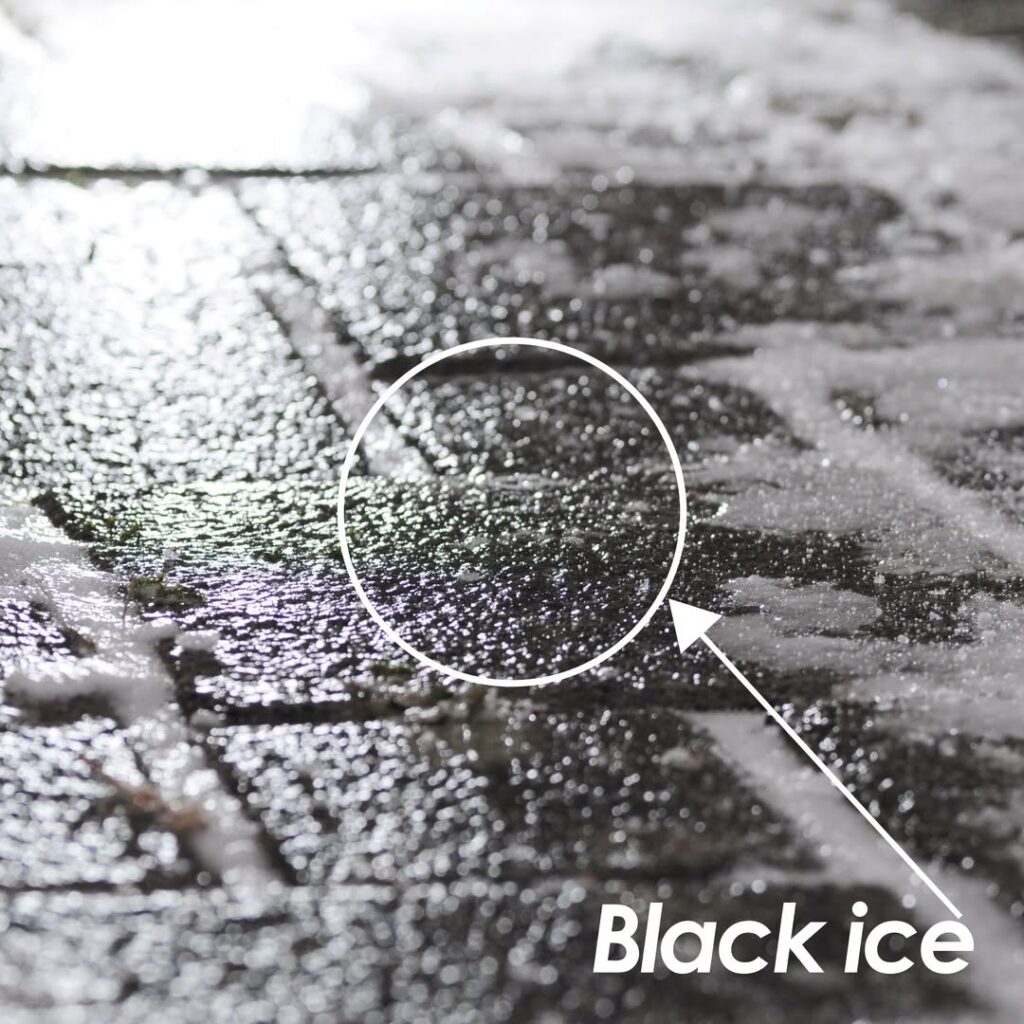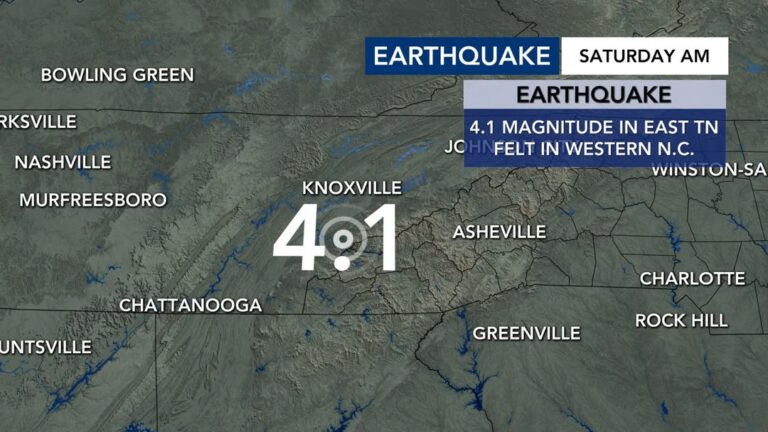
Introduction:
Black ice is one of the most dangerous winter hazards, often catching people off guard. Despite its name, black ice is not actually black—it’s a transparent layer of ice that forms on roads and pavements, typically on cold, wet surfaces. Because of its clarity, black ice is nearly invisible and can create slippery conditions that lead to accidents and injuries. In this guide, we’ll explain how black ice forms, why it’s so hazardous, and provide actionable tips on how to stay safe while driving or walking in snowy or icy conditions.
What Is Black Ice?
Black ice is a thin layer of ice that forms on roadways and pavements, typically when temperatures are below freezing. Unlike regular ice, which has a cloudy white appearance, black ice is clear and takes on the color of the surface beneath it, often resembling the dark asphalt of roads or parking lots. This transparency is why it’s also called “invisible ice”—it’s almost impossible to see with the naked eye, making it highly dangerous for both drivers and pedestrians.
How Does Black Ice Form?
Black ice forms under specific weather conditions, typically when moisture (from rain, snowmelt, or condensation) freezes upon contact with cold surfaces. Here’s how it happens:
- Freezing Rain or Drizzle: When rain or drizzle falls onto cold pavement, the water freezes almost instantly, forming a thin, clear sheet of ice. Since the ice is transparent, it blends with the surface, making it very hard to detect.
- Overnight Freezing: During overnight hours or early mornings when temperatures drop below freezing, moisture or dew that’s collected on the road can freeze into black ice, especially in shady areas or on bridges.
- Moisture from Snowmelt: On days when the temperature fluctuates above and below freezing, snowmelt can re-freeze during the night, forming black ice.
- Temperatures Just Below Freezing: Black ice typically forms when the temperature is just below 32°F (0°C), which is the freezing point of water.
Why Is Black Ice So Dangerous?
Black ice is considered especially hazardous due to its invisibility and the lack of traction it provides. Here’s why it’s so dangerous:
- Invisible to Drivers and Pedestrians: Because it is clear and takes on the appearance of the underlying road or pavement, black ice is extremely difficult to spot. Drivers may not notice the danger until they lose control of their vehicles, and pedestrians may not realize they’re walking on ice until they slip.
- Slippery Surface: Black ice is incredibly slick, offering no grip or traction for tires or shoes. This increases the risk of spin-outs and sliding for drivers, and falls for pedestrians.
- Common Locations: Black ice tends to form in certain areas more often, such as:
- Bridges and overpasses: These elevated surfaces freeze faster than the surrounding roads because they are exposed to cold air from all sides.
- Shaded areas: Roads or sidewalks under trees or overpasses may remain colder longer, increasing the likelihood of black ice formation.
- Ramps and parking lots: These areas often have slopes that allow moisture to collect and freeze quickly.
Common Locations Where Black Ice Forms
Understanding where black ice is most likely to form can help you stay safe. Some of the high-risk locations include:
- Bridges and Overpasses: Elevated surfaces freeze faster than the ground, making them a hotspot for black ice, especially in the early morning and late evening hours.
- Shaded Roads and Pathways: Areas that don’t receive direct sunlight or are shaded by trees or buildings are more likely to develop black ice.
- Tunnels and Underpasses: These structures stay cold due to limited sunlight and airflow, making them vulnerable to black ice formation.
- Sloped Areas: Parking lots, ramps, and inclined roads often see black ice form more quickly because water runs off and freezes at the base of these surfaces.
How to Stay Safe on Black Ice
Whether you’re walking or driving, here are safety tips for staying safe when you encounter black ice.
For Drivers:
- Slow Down: The best way to avoid black ice is to reduce your speed. When roads are wet, icy, or snow-covered, driving at slower speeds gives you more control over your vehicle and reduces your chances of slipping.
- Increase Following Distance: Keep a greater distance between your car and the vehicle in front of you. This will give you more time to react if the vehicle in front of you suddenly skids.
- Avoid Sudden Movements: If you lose traction, avoid sudden braking, turning, or accelerating. Instead, steer gently in the direction you want to go, and if you’re skidding, apply gentle pressure to the brakes.
- Check the Weather: Before heading out, check the forecast for freezing rain or temperature drops. This can help you avoid driving during conditions that are likely to cause black ice.
- Drive Defensively: Be on high alert during early morning hours and in the dark, when black ice is most likely to form.
For Pedestrians:
- Walk Slowly and Carefully: When walking in icy conditions, take small steps and keep your knees slightly bent to lower your center of gravity. This will help you maintain balance.
- Wear Proper Footwear: Wear shoes or boots with non-slip soles or consider ice cleats for extra traction. Avoid wearing smooth-soled shoes on icy surfaces.
- Watch for Shiny Surfaces: Shiny or wet surfaces may indicate black ice. Avoid walking on them if possible.
- Use Handrails: If you’re walking up or down stairs, ramps, or bridges, use handrails for extra stability.
- Avoid High-Risk Areas: Stay away from bridges, overpasses, and other areas where black ice tends to form.
What to Do If You Encounter Black Ice
If Driving:
- Stay calm and avoid making abrupt movements if your car begins to slide. Steer gently in the direction of the skid and gradually apply the brakes.
- Do not panic. Let the car come to a stop naturally, using minimal braking.
If Walking:
- Stop and assess the situation. If you feel unsafe, try to find a safer route or wait for help.
- If you do start to slip, try to fall safely by keeping your body relaxed and landing on your side or back to distribute the impact.
Conclusion: Be Prepared for Black Ice
Black ice is a dangerous and often invisible hazard, but with the right precautions, you can reduce your risk of injury or accident. Whether you’re driving or walking, staying alert to weather conditions, adjusting your speed or behavior, and wearing the right gear can help you stay safe when black ice is present.
By understanding how black ice forms and knowing how to stay safe, you can minimize the risks and protect yourself during the winter months. For more winter safety tips, check out our other articles on driving in winter and how to prevent slips on ice.



